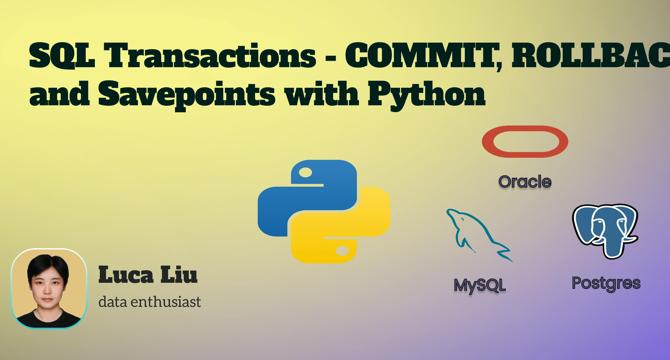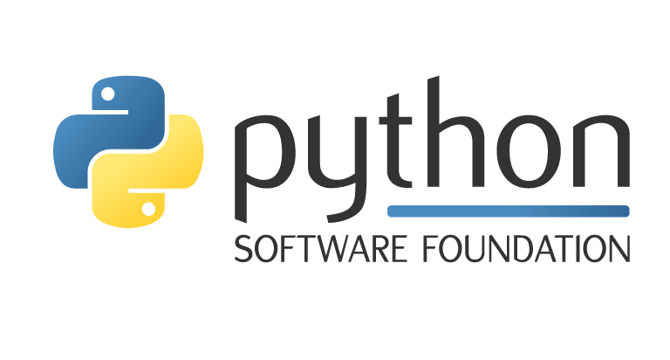Python
Dev
82

Image Credit: Dev
Real-Time DonationAlerts Notifications with Python, OAuth & WebSockets 🚀
- In this article, the focus is on setting up real-time DonationAlerts notifications using Python, OAuth, and WebSockets to instantly react to donations received.
- By leveraging WebSockets, developers can receive instant notifications without the inefficiency of API polling.
- The process involves registering an application on DonationAlerts, implementing OAuth 2.0 Authorization Code flow with Python, and connecting to the DonationAlerts Centrifugo WebSocket.
- Key steps include handling the OAuth flow securely, storing credentials outside the code, setting up FastAPI endpoints for OAuth, and exchanging codes for tokens.
- Connecting to the WebSocket for real-time events requires obtaining various tokens and following a specific sequence for authentication and subscription.
- The article explains the structure of donation messages and provides Python code snippets to handle, parse, and display donation data received through the WebSocket.
- To display donations in a web interface, developers can establish WebSocket connections between the backend and frontend, utilizing JavaScript to parse and show the donation data.
- This comprehensive guide equips developers with the knowledge to integrate real-time DonationAlerts notifications into their applications efficiently.
Read Full Article
4 Likes
Dev
150

Image Credit: Dev
Inter-Process Communication between NodeJS and Python
- Inter-Process Communication between NodeJS and Python involves sending JSON messages back and forth over stdin/out using NULL as a delimiter.
- Python process is blocking, allowing the NodeJS side to send multiple messages until processed by Python.
- JS side uses 'child_process' and 'path' modules to spawn and communicate with the Python script.
- Python script encodes and decodes messages using JSON format and delimiter to achieve effective communication.
Read Full Article
9 Likes
Dev
246

Image Credit: Dev
A2A Python Tutorial - Comprehensive Guide
- This Python tutorial covers building an A2A server, including setting up the environment, creating a project, and adding agent skills.
- It demonstrates creating agent skills, setting up a project environment, and adding Google-A2A Python libraries.
- The tutorial covers implementing agent skills in code, creating an Agent Card, and setting up an A2A server with a task manager.
- It explains the process of interacting with the A2A server using Google-A2A's command-line tool and adding agent capabilities for streaming responses.
- The tutorial also guides integrating a local Ollama model for AI functionality, including requirements, implementation steps, and testing.
- Finally, it suggests next steps like connecting AI models with MCP tools and exploring Google's Agent Development Kit.
- The tutorial provides a comprehensive guide for building an A2A server with AI capabilities.
- It involves creating agent skills, setting up server environment, interacting with the server, and integrating AI models.
- The tutorial covers tasks like adding libraries, implementing agent skills in code, and creating agent cards.
- It explains the process of setting up a task manager, handling requests, and streaming responses in an A2A server.
- The tutorial concludes with suggestions for future development like connecting AI models with MCP tools and exploring Agent Development Kit.
Read Full Article
14 Likes
Discover more
Towards Data Science
385

Rust for Python Developers: Why You Should Take a Look at the Rust Programming Language
- The programming language Rust is gaining popularity due to its performance and security features, making it an interesting alternative for Python developers, especially in the field of Data Science.
- Rust, developed by Mozilla, focuses on memory management control and an ownership model to prevent errors at compile time, offering advantages in performance over languages like Python.
- Rust is a compiled language that translates code into native machine code before execution, leading to faster execution and early error detection during compilation.
- Rust's memory safety without a garbage collector and ownership model prevent errors like NullPointer exceptions and race conditions, making it ideal for memory-intensive applications.
- Rust's tooling includes 'cargo' for managing code processes, and its growing community and high performance make it a favored language among programmers.
- Rust differs from Python in type specification, speed, memory usage, multithreading, error handling, and syntax, with Python being easier to start with but Rust offering higher performance and control.
- Rust complements Python by providing more control, high performance, and robustness for tasks that require parallelism and performance optimization, making it a valuable addition to a developer's toolset.
- In a comparison of opening a CSV file and counting rows, Python's code is straightforward but may have memory issues with large files, while Rust's code is more robust, efficient, and memory-saving.
- Rust shines in data science for tasks like data preprocessing with Polars for faster processing, compute-intensive tasks with PyO3 for integration with Python, and web backends with actix-web for high-performance APIs.
- Rust is recommended for developers interested in low-level programming, seeking improved performance over Python, working on backend services or CLI tools, understanding memory interactions, and developing robust, maintainable tools.
Read Full Article
22 Likes
Dev
37

Image Credit: Dev
Automated API Testing with Python: A Pragmatic Guide for Real-World Applications
- API testing is crucial in modern development environments, as it serves as the contract between systems.
- Automated API testing in Python can be achieved using the requests library and Python's built-in unittest framework.
- The project structure includes separate test logic, config, and runners for better organization and potential CI/CD integration.
- Python enables efficient API testing with tools like requests and unittest, offering flexibility for dynamic data and extensions like authentication and CI/CD integration.
Read Full Article
2 Likes
Hackernoon
13

Image Credit: Hackernoon
SQL Transactions - How to Implement COMMIT, ROLLBACK, and Savepoints With Python
- Tools like DataGrip simplify transaction handling by offering graphical interfaces for commit, rollback, and savepoints.
- In SQL, COMMIT finalizes changes, ROLLBACK reverts transactions, and SAVEPOINT allows partial rollbacks.
- Python libraries like cx_Oracle, mysql-connector-python, psycopg2 enable explicit transaction controls.
- Transactions involve starting, executing SQL statements, committing or rolling back changes, and using savepoints for finer control.
Read Full Article
Like
PlanetPython
191

Image Credit: PlanetPython
Python Software Foundation: Python Software Foundation Names New Deputy Executive Director
- Python Software Foundation (PSF) has promoted Loren Crary to Deputy Executive Director citing her outstanding contributions and leadership.
- Loren Crary, previously the Director of Resource Development, has been recognized for her continuous growth and dedication to the PSF's mission.
- Her promotion acknowledges the expanding role she plays within the organization, setting the PSF up for continued success and growth.
- Loren Crary will continue to strengthen strategic planning, budgeting processes, support PyCon US, manage sponsorships, and collaborate across the organization to further the PSF's mission.
Read Full Article
11 Likes
Dev
338

Image Credit: Dev
How I Replaced Python with C in My Project
- The author replaced Python with C in a high-performance data processing project due to performance bottlenecks.
- Key reasons for choosing C included predictable performance, direct memory control, and better hardware integration.
- The rewrite process involved creating C extensions for critical functions using Python's C API.
- A hybrid approach resulted in a 5-8x speedup in critical functions while maintaining most of the system in Python.
- Challenges included adapting to manual memory management and error handling in C.
- Lessons learned included not rewriting all code, using hybrid approaches, and prioritizing testing.
- The current architecture involves a Python frontend, a C core engine, and direct hardware communication.
- The migration to C led to significant performance improvements, better hardware integration, and reduced resource requirements.
- While C offered benefits for this project, the tradeoffs in development speed and maintainability should be considered.
- The author suggests considering Rust for future projects needing a balance between safety and performance.
Read Full Article
20 Likes
Medium
219

Image Credit: Medium
Just Stop Writing Python Functions Like This!!!
- Python functions packed with flags, messy logic, and unclear responsibilities can lead to chaotic code.
- It's important to avoid writing functions that rely heavily on flags for different functionalities.
- Instead of using multiple flags, focus on writing functions that have clear, singular purposes for better code maintainability.
- By following best practices such as using type hints for clarity and ensuring functions perform only one task, you can write cleaner and more readable Python functions.
Read Full Article
13 Likes
Towards Data Science
456

Modern GUI Applications for Computer Vision in Python
- Computer vision engineers often need visual feedback for image processing tasks, and interactive GUI applications can be helpful for this purpose.
- OpenCV provides basic interactive elements for creating GUIs in Python for computer vision projects.
- The article outlines setting up the environment with required packages, building a GUI application using OpenCV and customtkinter for real-time image processing.
- It demonstrates displaying webcam feed, using keyboard inputs for filters, adding captions to images, implementing sliders for filter selection, and applying various image processing filters like grayscale, blur, threshold, edge detection.
- To enhance the GUI appearance and user experience, a modern GUI using customtkinter is introduced.
- The article also discusses multithreading to separate image processing from the UI to prevent blocking the main thread during heavy processing tasks.
- A queue is utilized for synchronization between threads to ensure smooth updating of frames without flickering in the GUI.
- The code examples and steps provided offer a comprehensive guide to building interactive GUI applications for computer vision projects in Python.
- The article concludes by emphasizing the combination of Tkinter and OpenCV for creating modern GUI applications, with a Github repository link for the demo code.
- The interactive GUI applications enable efficient iteration and visualization for computer vision tasks, enhancing the development process and user experience.
- Overall, the article highlights practical techniques and considerations for developing modern GUI applications tailored to computer vision projects.
Read Full Article
27 Likes
Hackernoon
82

Image Credit: Hackernoon
Compute Global Reactivity Index (GRI) Using Python
- The Global Reactivity Index (GRI) provides information about a molecule's reactivity, derived from DFT-based descriptors like chemical potential, hardness, softness, electronegativity, and electrophilicity.
- GRI parameters are obtained from HOMO and LUMO energies, aiding in predicting organic and organometallic chemical reactivity trends.
- Parameters such as Electronegativity, Chemical potential, Global hardness, Global softness, and Electrophilicity index play crucial roles in reactivity and stability predictions.
- Frontier molecular orbital energies are used to determine these parameters, with calculations typically performed using quantum chemistry software like ORCA, Psi4, Gaussian, etc.
- Python scripts simplify the computation of GRI parameters, automating the process with equations for Ionization potential, Electron affinity, and subsequent derivations.
- Theoretical background and software options for HOMO/LUMO calculations are showcased, with detailed steps on extracting these energies using Python.
- Batch processing capabilities using a CSV file input and a Python script enable efficient computation of GRI descriptors for multiple molecules.
- The GRI calculation script provides outputs such as Ionization Potential, Electronegativity, Global Hardness, Global Softness, and Electrophilicity Index for each molecule.
- Automated orbital energy extraction and GRI calculation techniques enhance the study of reactivity trends and stability in molecular systems.
- The integration of quantum chemistry methods, Python scripting, and batch processing streamlines computational reactivity analysis for various chemistry research applications.
Read Full Article
4 Likes
Dev
146

Image Credit: Dev
How to scrape TikTok using Python
- TikTok users generate valuable data for analysis, and scraping this data can provide insights on trending hashtags, influencer engagement rates, and content creator topics.
- The blog discusses how to scrape TikTok using Crawlee for Python, covering steps like project setup, analyzing TikTok for scraping strategy, configuring Crawlee, extracting TikTok data, creating a TikTok Actor on the Apify platform, and deployment.
- The prerequisites for the project include Python 3.9+, web scraping familiarity, Crawlee for Python v0.6.0+, uv v0.6+, and an Apify account.
- Project setup involves using uv for package management, creating the project with uvx, and navigating to the project folder.
- Analyzing TikTok involves understanding its JavaScript-heavy site, using Playwright for crawling, and inspecting HTML structure and data extraction.
- Configuring Crawlee includes limiting elements, setting scraping intensity, specifying browser type, and handling permissions and timeouts.
- Extracting TikTok data involves navigating, handling infinite scrolling, and extracting video links and information using PlaywrightCrawlingContext.
- Creating a TikTok Actor on the Apify platform requires adapting the project structure, defining metadata, input parameters, and updating the code to accept input.
- Deployment to Apify involves using the CLI to upload the code, configuring runs, testing with input parameters, logging, and viewing results in the dataset.
- The project lays a foundation for effective TikTok crawling, suggests improvements like error handling and CAPTCHA handling, and provides access to the code repository for further reference.
- The blog encourages support for Crawlee for Python by starring the repository or joining the maintainer team, and invites engagement and discussions on Discord with a community of developers.
Read Full Article
8 Likes
RealPython
123

Image Credit: RealPython
Modern Web Automation With Python and Selenium
- Selenium is a web automation tool that allows Python to interact with dynamic web pages by driving a real browser.
- Implementing the Page Object Model design pattern helps create clean and scalable automation scripts.
- Selenium enables launching browsers, visiting URLs, and interacting with web elements.
- Headless browsers allow running scripts without displaying a browser window, beneficial for automation and testing.
- Different locators like CSS selectors, XPath, or IDs can be used to target web elements.
- Explicit waits offer a flexible way to handle dynamic content by waiting for specific conditions.
- Page Object Model design pattern separates page structure from business logic.
- Selenium with Python can be used to build a music player that interacts with Bandcamp's Discover page.
- By implementing POM, automation scripts can be kept clean, testable, and maintainable.
- Selenium is useful for automated testing and generic web automation, providing a convenient API to control browsers.
Read Full Article
7 Likes
Dev
269

Image Credit: Dev
Using Python & WebSockets to Generate Live OHLC Forex Data
- This tutorial guides you on building a real-time Forex OHLC data generator using Python and WebSockets.
- Accessing real-time market data is crucial for trading and financial analytics, and WebSockets provide an efficient method for continuous data streaming.
- You'll need a TraderMade API key to stream live Forex data, access a 14-day free trial to get the key from your account dashboard.
- The process involves installing the TraderMade Package, importing required libraries, initializing data structures, defining utility functions, connecting to the WebSocket stream, and running your script to generate OHLC output.
Read Full Article
16 Likes
For uninterrupted reading, download the app